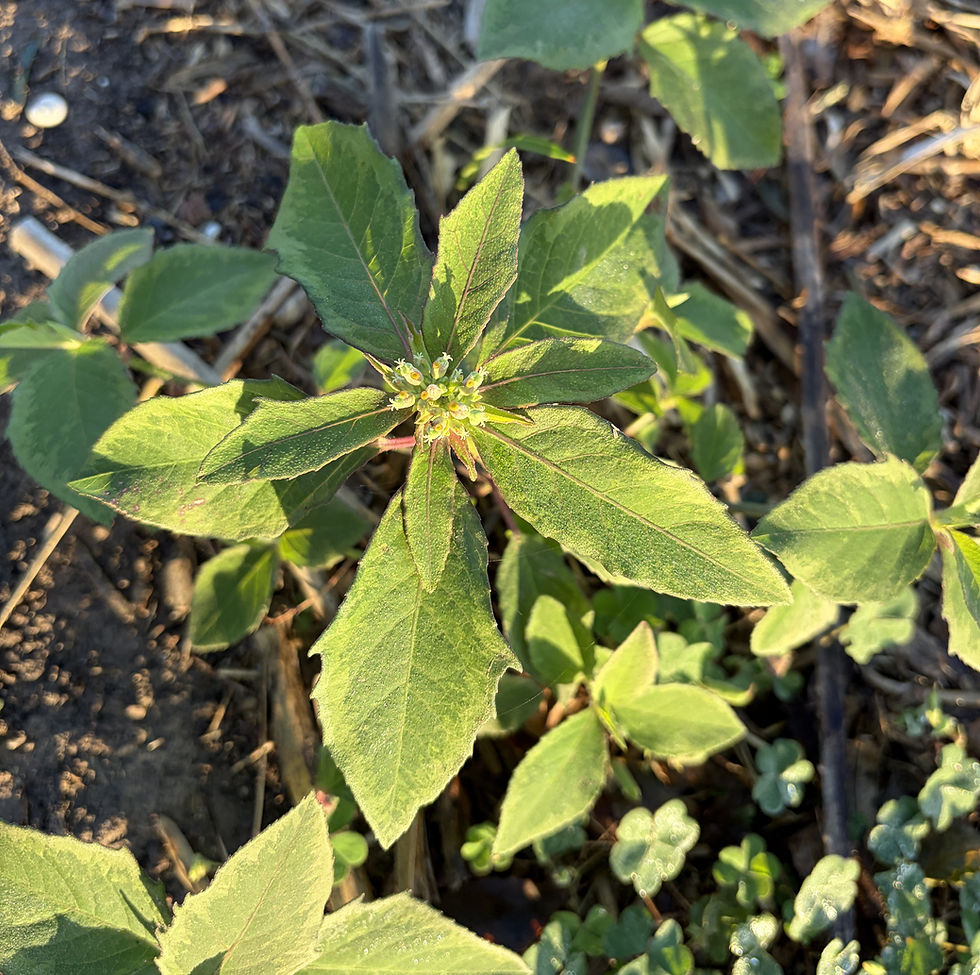Impromptu gardens for the curiosity seekers
- jjvanm
- Jul 6, 2025
- 3 min read

Published in the McAllen Monitor July 5, 2025
Story and photos by Anita Westervelt
You may have seen posters or promotions about no mow and don’t spray. The premise was to allow native plants and wildflowers to bloom and produce nectar and pollen for early spring beneficial insects and pollinators. After the blooms, plants would go to seed and generate the continuation of native species.
Although the event was promoted for the month of May, the option of not mowing can continue as long as a landowner likes. A caution though; some discernment may be appropriate. When I briefly discussed this article topic with my husband, he kindly offered that everyone has a part of their yard that is hard to mow. I thought, what an excellent place to start a no mow project.
By inadvertent neglect I already had a no mow project. I had allowed a triangular patch of interesting vegetation to take shape where the pavement meets the front of his workshop.
That corner had artistically arranged itself into a still life in pleasant shades of green.
One tall thin plant acted as an eye-catcher, while the lower plants grounded the arrangement at the foundation of the building with latitudes of varying heights and textures.
The prominent plant was one that crops up each year somewhere on our property but never identified. This year, with the flowers beginning to bloom at the top of the stalk, iNaturalist.org identified it as horseweed, Erigeron canadensis. The flowers are tiny. Some sources report that insects, especially wasps and flies, visit for the nectar. The plant is native to north America, not specifically to the Rio Grande Valley. It is not a strong nectar source; it is a prolific seed producer. A discerning gardener would pull it up before it goes to seed.

The elongated spade-shaped leaves travelling up the horseweed stalk is a local native vine in the moonseed family: Mexican snailseed, Nephroia diversifolia. Bugs are drawn to its nectar-rich flowers, and birds eat the ripe fruit. Another plus, it is a host plant for the pretty moonseed moth. The vine is tough to get rid of if unwanted; it resists being pulled out of the soil by hand and time-consuming to remove from chain link fences. Birds help propagate the species.
Forming the foundation of our artful corner is an interesting plant that looks like a tiny mesquite forest. It is wild tantan, Desmanthus virgatus. The plants have been growing adjacent to the pavement for years without aggressively travelling beyond. Native to Texas and Florida, wild tantan is a perennial and blooms spring to fall. The tiny white spiky flowers with yellow stamen are about a quarter of an inch in size and inconspicuous. Like the honey mesquite tree, wild tantan is in the pea family. It fruits in clusters of flat, curved legumes about two inches long. This plant is a keeper. It attracts pollinators and rarely gets taller than six inches.

Two plants intermingle and pose as ground covers. Slender yellow woodsorrel, Oxalis dilleniid, considered a creeping annual, can spread aggressively by seeds and rhizomes. It is a heavy seed producer. The seeds are possibly consumed by birds and insects. The tiny flowers are attractive to bees, ants and small butterflies. The other low sprawling plant is straggler daisy, Calyptocarpus vialis. Its flowers bloom during all seasons in the Rio Grande Valley. It is a good nectar plant for butterflies and a host plant for bordered patch butterflies. Both plants may be keepers only because they may never be completely weeded out.
The heart shaped light green leaves throughout this visage belong to a vine that should be pulled up by the roots. It is red center morning glory, Ipomoea Amnicola. Native to South America, it is a sneaky vine that is spreading rapidly across south Texas. It camouflages itself amongst other healthy green plants and trees unnoticed until the white flowers burst open, finally calling attention to its covert invasion – but only after it has shrouded shrubs and trees more beneficial to the habitat. It is a prolific bloomer and produces legions of seeds. It is not our friend.

A lone eight-inch short spire of toothed edged leaves stands erect at the edge of the building’s foundation. It is the start of a spiny hackberry, Celtis pallida. Although a good tree to attract birds, butterflies and beneficial insects, close to a structure is not a good place for any tree. It can be rescued and planted in a more appropriate place; dig deep to get the whole tap root.

- 30 -





